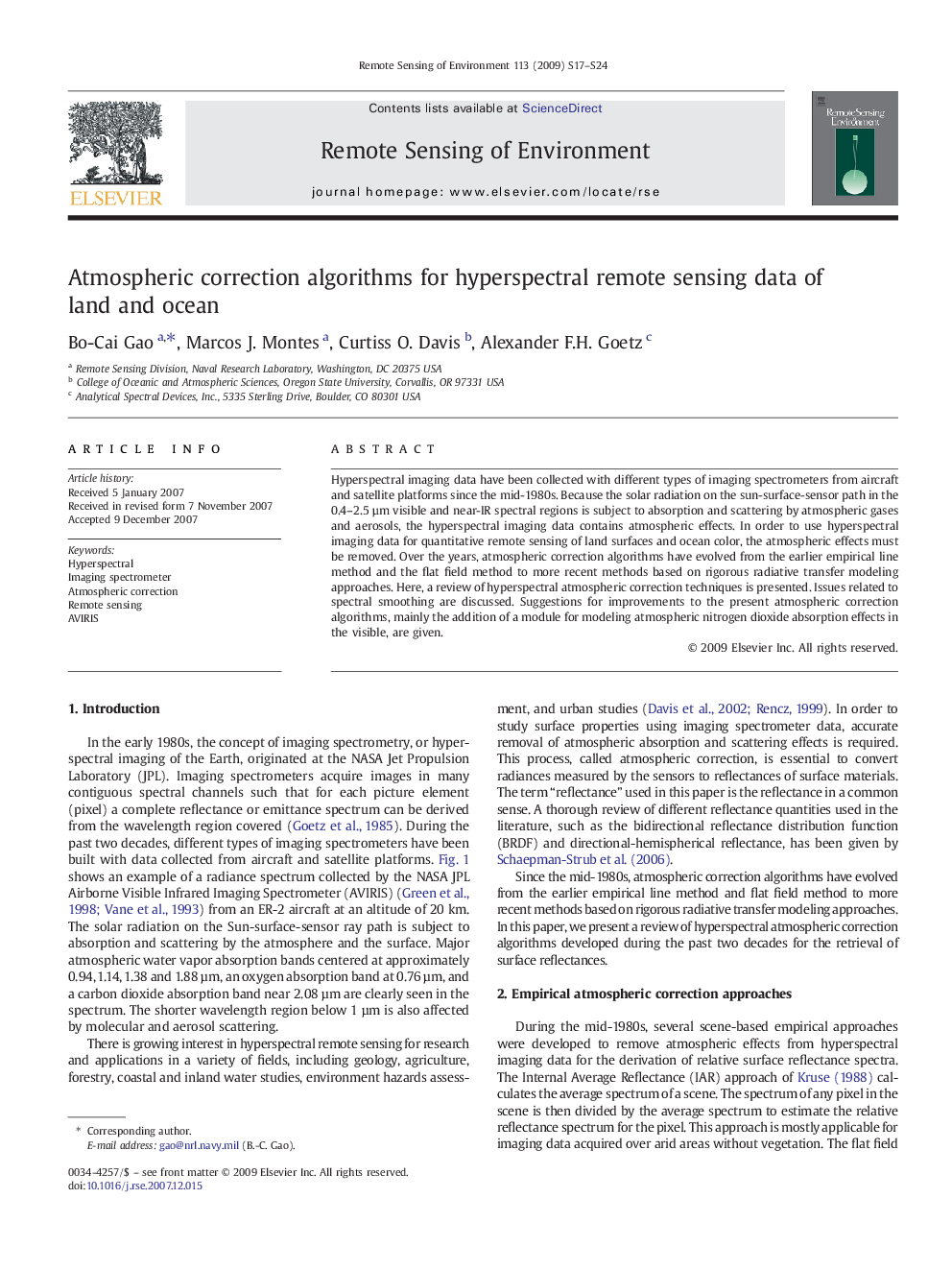| Article ID | Journal | Published Year | Pages | File Type |
|---|---|---|---|---|
| 4460305 | Remote Sensing of Environment | 2009 | 8 Pages |
Hyperspectral imaging data have been collected with different types of imaging spectrometers from aircraft and satellite platforms since the mid-1980s. Because the solar radiation on the sun-surface-sensor path in the 0.4–2.5 µm visible and near-IR spectral regions is subject to absorption and scattering by atmospheric gases and aerosols, the hyperspectral imaging data contains atmospheric effects. In order to use hyperspectral imaging data for quantitative remote sensing of land surfaces and ocean color, the atmospheric effects must be removed. Over the years, atmospheric correction algorithms have evolved from the earlier empirical line method and the flat field method to more recent methods based on rigorous radiative transfer modeling approaches. Here, a review of hyperspectral atmospheric correction techniques is presented. Issues related to spectral smoothing are discussed. Suggestions for improvements to the present atmospheric correction algorithms, mainly the addition of a module for modeling atmospheric nitrogen dioxide absorption effects in the visible, are given.
